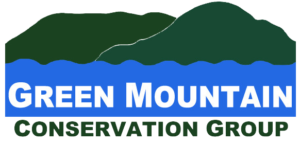

Vernal Pool Ecology Zoom
May 4, 2023 @ 7:00 pm - 8:00 pm
Vernal Pool Ecology Programs in partnership Tin Mountain Conservation Center
————- 7pm – 8pm May 4, 2023 —————–
Green Mountain Conservation Group Headquarters
Huntress Bridge Rd, Effingham, NH 03882
Zoom event link: https://us06web.zoom.us/j/84858133439
Vernal Pools are typically ephemeral surface waters that flood in winter and typically dry up in summer. By definition in Maine, New Hampshire, Massachusetts, and most other northeastern states, vernal pools contain one or more biological indicators, have ice-free water for at least 60 days on an average year, and do not regularly support fish. The bio-indicators for vernal pools include any of the mole salamanders (i.e. spotted, Jefferson’s, blue-spotted, or marbled), wood frog, and/or fairy shrimp. In addition, they typically host a variety of macro-invertebrate organisms besides fairy shrimp that provide food for the breeding amphibians.
Vernal pools are incredibly important on the landscape as they provide temporary habitat for migratory wildlife such as waterfowl, turtles, and other amphibians, as well as food chain support for larger wildlife. They also provide a source of fresh water for deer and other large game, and contribute to the diversity of plants, algae, mushrooms, and aquatic micro-organisms. Normally they occur in otherwise dry landscapes such as at watershed divides, low terraces, and floodplains.
The Tin Mountain zoom seminar will introduce participants to ecology and conservation of vernal pools through a slide lecture program. We will talk about the physical, chemical, and biological aspects of vernal pools, as well as the conservation effort at the GMCG headquarters that resulted in the creation and protection of a significant vernal pool. We will also talk about vernal pool buffers, the road crossing guard programs in the state, and forestry BMPs as they relate to these depressional landscape features.
REFERENCES – AMPHIBIANS (recommended)
Bailey, N.T.J. 1951. On estimating the size of mobile populations from capture-recapture data. Biometrika 38:293-306.
Burton, T.M. and G.E. Likens. 1975. Salamander populations and biomass in the Hubbard Brook Experimental Forest, New Hampshire. Copeia 1975: 541-546.
Colburn, Elizabeth A. 2004. Vernal Pools: Natural History and Conservation. Blacksburg, VA: McDonald and Woodward Publishing Co.
Colburn, E.A. ed. 1991. Certified! A Citizen’s Step-by-Step Guide to Protecting Vernal Pools. 4th ed. Lincoln: Massachusetts Audubon Society.
Conant, Roger, and Joseph T. Collins. 1998. Peterson Field Guide to Reptiles and Amphibians. Boston: Houghton-Mifflin Co.
Corn, P.S. and R.B. Bury. 1990. Sampling Methods for Terrestrial Amphibians and Reptiles. Washington D.C.: USDA Forest Service General Technical Report. PNW – GTR – 256.
Crother, B. I. (ed.). 2008. Scientific and Standard English Names of Amphibians and Reptiles of North America North of Mexico, pp. 1–84. SSAR Herpetological Circular 37.
DeGraaf, R.M. and D.D. Rudis. 1983. Amphibians and Reptiles of New England. Amherst: University of Massachusetts Press.
Dodd, C.K. Jr. 1991. Drift fence associated sampling bias of amphibians at a Florida sandhills temporary pond. Journal of Herpetology 25:296-301.
Gill, D.E. 1978. The metapopulation ecology of the red-spotted newt, Notophthalmus viridescens (Raf.). Ecological Monographs 48:145-166.
Heyer, R.W., M.A. Donnelly, R.W. McDiarmid, L.C. Hayek, and M.S. Foster, ed.s. 1994. Measuring and Monitoring Biological Diversity: Standard Methods for Amphibians. Washington D.C.: Smithsonian Institution Press.
Karns, D.R. 1986. Field herpetology: methods for the study of amphibians and reptiles in Minnesota. St. Paul: James Ford Bell Museum of Natural History, Occasional Paper 18.
Kenney, Leo, and Matthew Burne. 2000. A Field Guide to the Animals of Vernal Pools. Boston: Massachusetts Division of Fisheries and Wildlife.
Marchand, Michael. 2016. Identification and Documentation of Vernal Pools in New Hampshire. 3rd ed. Concord: NH Fish & Game Department Nongame and Endangered Wildlife Program.
Mitchell, J.C., A.R. Breisch, and K.A. Buhlmann. 2006. Habitat Management Guidelines for Amphibians and Reptiles of the Northeastern United States. Partners in Amphibian and Reptile Conservation, Technical Publication HMG-3, Montgomery, AL.
NH Fish & Game Department. 2014. Habitat Stewardship Series, Vernal Pools. Wildlife Action Plan. https://wildlife.state.nh.us/nongame/documents/habitat-vernalpools.pdf
Szaro, R.C., K.E. Seversen, and D.R. Patton, ed.s. 1988. Management of Amphibians, Reptiles, and Small Mammals in North America. Washington D.C.: USDA Forest Service, General Technical Report RM – 166.
Taylor, J. 1993. The Amphibians and Reptiles of New Hampshire. Concord: NH Fish & Game Dept.
Tyning, T. 1990. A Guide to Reptiles and Amphibians (Stokes Nature Guide). Boston: Little, Brown & Company.
Windmiller, Brian. 1995. Terrestrial Habitat Utilization by Pond-breeding Amphibians: Landscape Linkages and Conservation. Paper presented at the 16th annual meeting of the Society of Wetland Scientists, 29 May, Boston, Mass.




